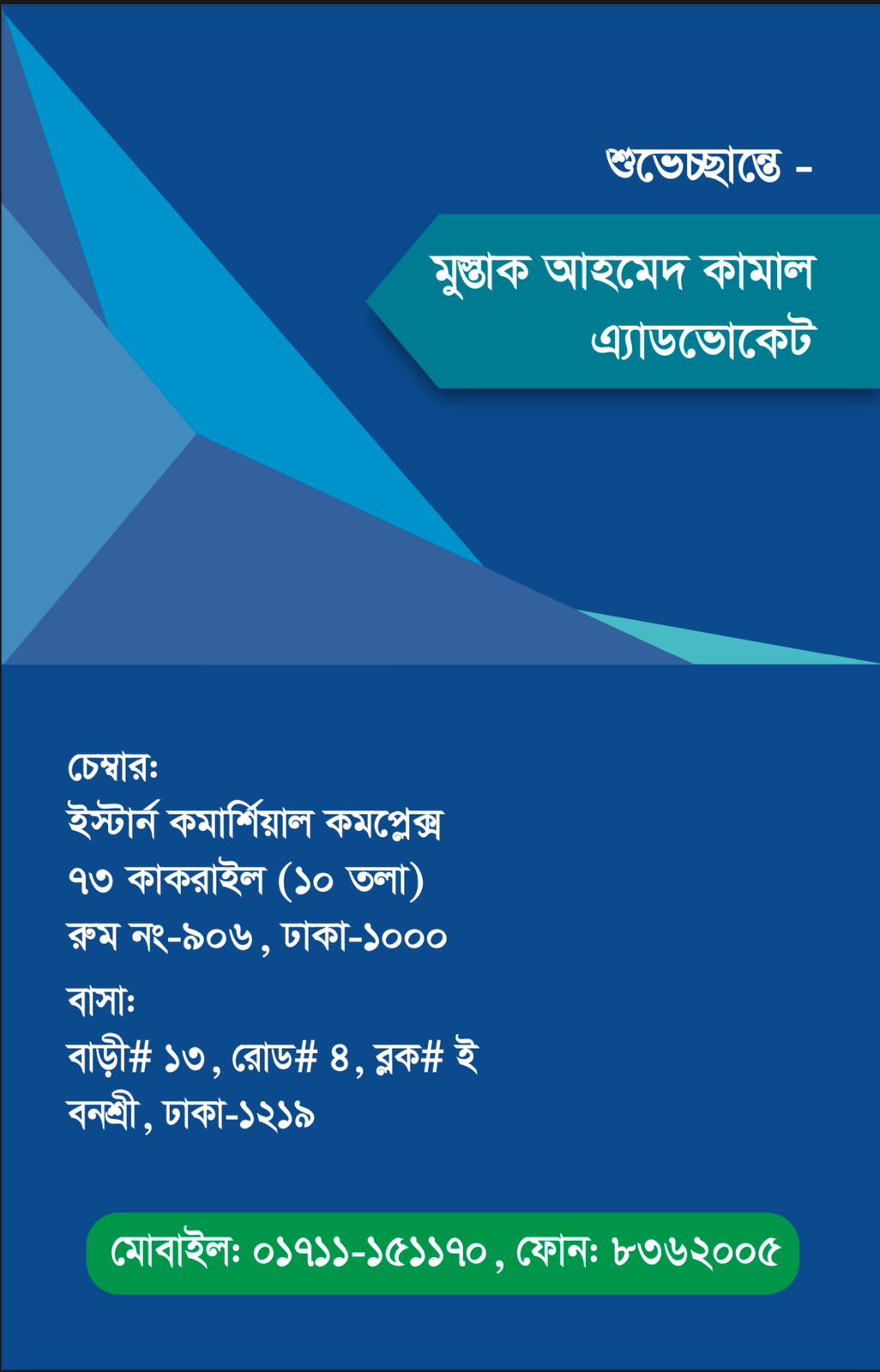The Environmental Challenges
The Environmental Challenges
-Options for Sustainable Development in Bangladesh
Md. Oly Ullah Chowdhury
Lecturer in GED,
Northern University Bangladesh
E.mail. olydu92@gmail.com
Introduction
The Environmental stability of human settlement now is an international concern; but since the Industrial Revolution in 1760 to the recent past, people have thought about the economic growth in almost all development strategies and programs. They exposed little concern about the environment that could be affected by taking such strategies and programs. That’s why the people have indiscriminately deforested and subsequently industrialized and modernized their habitations. Consequently, the level of greenhouse gases like, Carbon Di-oxide, Carbon Monoxide, Sulphur Di-oxide, Sulphur Monoxide, etc. have increased considerably. This resulted in the gradual disrupting the Eco-systems, especially food chains and food webs along with the rise of global tempreture. This situation is melting down the polar icebergs at an alarmingly higher rate and increasing the seawater level throughout the world. As a whole, the global environment and its biodiversity are under constant threat at present, and it is believed that two-thirds of the global wildlife may perish within the last decades of this century.
Bangladesh, as a developing country, should be more conscious and take responsibility for such environmental degradation and related natural disasters, to overcome its present vulnerable condition. Scientists have already predicted that a considerable part of Bangladesh’s coastal region may be submerged shortly due to the recurrent natural disasters like, Sidr, Aila, Bulbul etc. as well as situational problems like, inundation, drought, water logging, over-salinity, etc. Our coastal and low lying habitats are already threatened, despite all measures taken so far. So, we have to take sustainable initiative to resolve these problems immidiately. If such an initiative is not taken or delayed, the result will be even direr than the present. As Allah (ZS) has gracefully revealed in the Holy Quraan,“Struggle dominates on the terrestrial and aquatic environment, only due to human (evil) actions, that He (Allah) may make them taste a little part of that, which they have done themselves, so that they may get back (to good deeds). (Verse, 30:41)”.
Sustainable Development and Bangladesh
The term ‘Sustainable Development’ was first coined in a book written for the UN Stockholm Conference on Human Environment. Sustainable Development refers to organizing principles of development; the aim of it is to create an eco-friendly sustainable world for our future generations. According to Brundtland Report ‘Sustainable development is a development that meets the needs of the present without compromising the ability of the future generations to meet their own needs’ (UN, 1987). Many models have so far clarified the concept of sustainable development, of which the Four Sphere’s model is most conspicuous. According to it, for sustainable development, an environmental aspect cares about environmental protection, energy efficiency, use of natural resources, and environmental justice. If we consider the environmental aspects as the main concern, then our perambulation will be escalated in the Politics, Economics, Cultural Yard, and Society at large (Social Inclusion and Civil Rights. Sustainable development is possible if the social environment, economy, and politics are preferably related to the developmental work through the best use of natural energy.
If we consider environmental aspects to be a major concern, then our development in politics, the economy, the cultural arena, and the social arena (social inclusion and civil rights) will be further developed.

Four Spheres Model of Sustainable Development
The Intensity of Major Environmental Disasters in Dhaka
The atmosphere is a mixture of gases, predominantly N2 (78.09%), O2 (20.94%), Argon (0.93%), CO2 (0.032%) and some other gases (less than 1%) (Shukla, R.S. and Chandel, P.S.2003). According to a World Bank report, Air pollution causes 15,000 deaths in Bangladesh each year. In 1995, the average Ozone absorption in Mexico City was about 0.15 parts per million, ten times of that of natural atmospheric absorption and twice the maximum permitted volume in Japan or United States. The density of lead in the air of Dhaka is 463 Nanograms per cubic meter, which is ten times more than the acceptable standard and many times more than the above-mentioned cities, even than the most polluted city – Mexico (Ahmed, Shakeel,2011). Now, the question is, why is the intensity of air pollution is more in a developing country like Bangladesh? One of the facts behind this is the Exhaust fumes out of vehicles, burning of fossil fuels, such as coal, oil, or gas, harmful off-gassing from materials, such as paint, plastic production, and so on (Shukla, R.S. & Chandel, P.S.,2003). The national ambient air quality of Bangladesh and volume of pollutants in the air of Dhaka city are revealed below-
| Land Use Categories | 8 hours average concentration in µg/m3 | |||
| CO2 | NO2 | SPM | SO2 | |
| Industrial Use | 5,000 | 100 | 500 | 120 |
| Commercial Use | 5,000 | 100 | 400 | 100 |
| Residential Use | 2,000 | 80 | 200 | 80 |
| Sensitive* Use | 1,000 | 30 | 100 | 30 |
| Sensitive* – National monument, health resort, hospitals, archeological spots, educational institutions, etc. | ||||
Source: Department of Environment (DOE), 1997
It is appraised that on an average, 870 million acre-feet of river water flows annually across our boundaries, the average amount of rainfall in the country is about 203 million acre-feet (Gain, Philip.,2002). The surface water of the country is vulnerable from untreated industrial sewage and municipal manures, excess pollution from chemical fertilizers and pesticides and oil, lubes emission in the coastal area from the operation of sea and river ports and ship breakage. The rivers that are sealed to Dhaka city like Buriganga, Turag, and Balu have contaminated more than the others have. The pollution spot near the Buriganga Third Bridge, releases a huge amount of toxic chemical waste out of Hazaribagh Tannery through Bashila Canal. There are about 149 tanneries in this area, which produce daily about 18,000 liters of melted and about 115 metric tons of solid wastes, most of which are released into the Turag river through Bashila and Katasur Canals (Binte Amin, Fahima,2015). According to Mott Macdonald International Ltd’s report of 2007, the total amount of solid waste generated every day in DCC area is about 7500 to 8000 tons. Another worst pollution spot is near the Tongi Bridge that originates massive pollutants loading from the Tongi Industrial Area. This industrial area retains about 29 heavy industries. This constellation of industries of the capital produces 7,159 kg wastes daily (Binte Amin, Fahima,2015).
Due to noise pollution, millions of people in Bangladesh have become susceptible to several health risks, ranging from deafness to cardiac arrests. On the streets of the city, noise pollution is a common scenario, initiated by hydraulic horns of vehicles, microphones, and cassette players (Islam, Sirajul. 2003). According to the World Health Organization (WHO), commonly 60 dB (decibel) sound can make a man deaf shortly and 100 dB sound can cause complete deafness.
According to the Noise Pollution (Control) Act 2006,
| Acceptable sound dimensions for Bangladesh (in dB) | |||||||||
| Silent Area | Residential Area | Commercial Area | Industrial Area | Mixed Area | |||||
| Day | Night | Day | Night | Day | Night | Day | Night | Day | Night |
| 50 | 40 | 50 | 45 | 70 | 60 | 75 | 70 | 60 | 50 |
| Source: Noise Pollution (Control) Act, 2006, DoE, Bangladesh Government | |||||||||
The noise level was above 130 dB at Farmgate, 120dB during daytime at Gabtoli, Arambagh intersection, Gulshan-2 intersection, Gulistan intersection, Mirpur 10 intersection, Banglamotor, New Market, Mascot Plaza of Uttara, and Jagannath University (DoE, 2006). It is seen that the noise level of the south parts of Dhaka City has become terrible, which is shown in the table.
| Location | Measured noise level (dB) | |
| Day | Night | |
| Farmgate | 130.2 | 65.7 |
| Jatrabari Intersection | 85.9 | 83.7 |
| Saidabad Intersection | 88.5 | 87.1 |
| Saidabad Bus Terminal | 90.7 | 91.4 |
| Jatrabari Ideal High School | 83.5 | 75 |
|
Source: A. Hassan, 2013 |
||
The environmental degradation happens due to the unwise activities of people, which may sometime turn into a disaster. Earth-quake, landslide, soil erosion due to cutting of bank-vegetation, arbitrary destruction of forests, emissions of toxic gases and the release of toxic chemicals etc. are all anthropogenic disasters. According to FAO, there is left only 11.1% of forested land area in the total country. Bangladesh has lost an average 3.5% of forest land from 1990 to 2010. If this happens, then gradually the country will turn into a barren desert, which we are already observing in different parts of Rajshahi area. The country’s temperature has been increasing, at an unstable rate, resulting in recurrent natural disasters, earthquake, surge, tornedo, tidal bores etc., like – Sidr, Aila, Nargis, Phony, Bulbul etc.
Risk Reduction Strategy and Sustainable Development of Bangladesh
As a considerable period like 10 to 15 years is required to understand the Climatic condition and changes from the regular weather physiographic reports, to implement any correlated operation to save the environment of Bangladesh in a sustainable way, we need to plan for a long-term action policy.
Conservation of Biodiversity for Sustainable Development
Human beings, to a substantial magnitude are directly or indirectly dependant upon biodiversity for their existance. Due to the increase in population, urbanization, and industrialization, we are pushing the environment into an alarming threat. Since, it is almost impossible to recover whatever we have already lost due to our own actions, so our immediate task should be to protect the existing resources in a sustainable way for our future generations. Conservation of Biodiversity can be depicted with two methods: In-situ and Ex-situ conservation – (Shukla, R.S. & Chandel, P.S.,2003).
Supply Management and Sewage Disposal
Dhaka is recognized as one of the Mega cities in the developing countries of the world. Its population size is about 10 million and the population density (persons per sq. km) of greater Dhaka city is about 30,000. Though, for Small Income Community (LIC) people, the density upsurges to 220,000, which is more than 7 times paralleled to that of Dhaka city (A.Khan,Taqsem). In the city of such population density, there is almost no plan to remove man-made wastes. Most initiatives taken so far such as drains or conduit pumps to remove garbage are probably filled up with rigid wastes like polythene, plastic bag or sags, creating water logging at many parts of the city after a short time downpour. Worst of all, is the condition of river-water, which has being over-polluted. This is due the throwing of all sorts of rubbish into the river-water like – Buriganga, Turag etc. So, to get rid of such a curse, we have to take some long-term and sustainable action plans.
- To eradicate such problems, generally three methods are applied for sewage disposal like, Soaking pits, Septic tank, and Municipal sewage disposal plants. According to the requirements of the city, Bangladesh Govt. has to take proper initiatives to adopt anyone of those.
- The terminal releasing point of sewage systems of Dhaka city should be moderated for not to release the waste into the river, but should be recycled for re-use or burried deep into the soil for degradation.
- The existing drains in the city should be expanded and controlled through warnings to public, for not to release their household wastes/dirts directly into the drain, but in the supplied bins placed on certain pick up points.
- To create awareness among the people, publicity programs, seminars, symposia etc. can be organized, directly or through mass media and volunteers especially, young people should be engaged to propagte about health hazards and safety measures.
Human Movement and Environmental Sustainability

Replace, regulate, and restore model of pollution management
Govt. authorities, NGOs and the public need to commit together to achieve a sustainable environmental development. There are large number of NGOs in Bangladesh, who have to enroll for working for such development, like- framing of environmental policies, protecting endangered and vulnerable faunal or floral Species, mobilizing public volunteers and mass people for such sustainability. It is known that, the widespread use of gas, fuel, oil and other energy resources has been leading us towards global warming, which is mostly responsible for Climate change. So, in order to stop pollution here, we all must work together, hand in hand. A prescribed approach for such strategies can be taken from the following boxes, a model for anti-pollution campaign (Rutherford, Jill. 2009).
Meanwhile, the Bangladesh government has taken several steps to protect the environment, like- National strategy and action plan 2009, Organized with three other donor countries (Sweden, Denmark, UK), Bangladesh has launched a common trust fund from development partners to implement a long-term strategy, which is named as Bangladesh Climate Change Resilience Fund (BCCRF). The fund currently comprises of USD 125 million, and will be offered to finance the operation of the national strategy and action plan, within the following six supports:
- Food security, social protection and health,
- Comprehensive disaster management,
- Infrastructural development
- Research and knowledge management,
- Mitigation and low-Carbon development
- Capacity building and institutional strengthening
(SIDA, Common Donor fund will assist Bangladesh to adopt).
Concluding Remarks
 Now, talks about Global warming and Climate change have been the sweltering issues around the world. Environmental scientists believe that already one-third of mammals, fishes, reptiles, and other animals have been extinct due to Climate change. In Bangladesh we have already been observing their impacts. One of the reasons is that, we ourself are pushing the environment towards such disasters, by burning fossil fuel, cutting down our forests, releasing hazardous gases like – CO2, NO2, CH4, CFC, etc. In addition to government’s initiative to protect us from disasters and to make natural balance sustainable for the future generation, we need to realize the necessity of achieving an eco-friendly environment. In collaboration with the Govt., we have to strive hard in a scientific way to achieve our esteemed goal to achieve a balanced sustainable and livable environment especially in Bangladesh.
Now, talks about Global warming and Climate change have been the sweltering issues around the world. Environmental scientists believe that already one-third of mammals, fishes, reptiles, and other animals have been extinct due to Climate change. In Bangladesh we have already been observing their impacts. One of the reasons is that, we ourself are pushing the environment towards such disasters, by burning fossil fuel, cutting down our forests, releasing hazardous gases like – CO2, NO2, CH4, CFC, etc. In addition to government’s initiative to protect us from disasters and to make natural balance sustainable for the future generation, we need to realize the necessity of achieving an eco-friendly environment. In collaboration with the Govt., we have to strive hard in a scientific way to achieve our esteemed goal to achieve a balanced sustainable and livable environment especially in Bangladesh.
References:
- Islamic Foundation Bangladesh, 2016. “Surah Rum Ayat No. 41: Al Quran-ul-Karim”. Dhaka: Efa publications.
- UN, 1987. “Our Common Future: Brundtland Report: A World Commission on Environment and Development.”
- Shukla, R.S. and Chandel, P.S.2003. Plant Ecology and Soil Science. India: Rajendra Ravindra Printers (Pvt.) Ltd, Ram Nagar, New Delhi-11005.
- Ahmed, Shakeel. 2011. “Air Pollution Kills 15,000 Bangladeshis Each Year”. PATIMES: American Society for Public Administration. Available at: https://patimes.org/air-pollution-kills-15000-bangladeshis-each-year/.
- Gain, Philip. 2002. Bangladesh Environment. Published by: Society for Environment and Development (SEHD), Lalmatia, Dhaka-1207.
- Binte Amin, Fahima. 2015. “Water Pollution of most of the water source in Bangladesh” 24th march 2015. Foreign Affairs Insights & Review (FAIR). Available at:http://fairBangladesh.net/about-fair/.
- Islam, Sirajul. 2003. Banglapedia: National Encyclopedia of Bangladesh, Dhaka: Asiatic Society of Bangladesh.
- DoE, 2006. Department of Environment, Government of the people’s Republic of Bangladesh.
- Khan, Taqsem. “Dhaka Water Supply and Sewerage Authority: Performance and Challenges”. Dhaka WASA, Bangladesh.
- Hassan, J.B.Alam . International Journal of Engineering Research and Applications (IJERA) ISSN: 2248-9622 , Vol. 3, Issue 2, March -April 2013, pp.1032-1040.
- Rutherford, Jill. 2009. Environmental Systems and Societies, Oxford University Press, Oxford, New York.
- 2014, “Common Donor fund will assist Bangladesh to adopt”.Department for Asia, North Africa and Humanitarian Assistance. Available at:https://www.sida.se/English/where-we-work/Asia/Bangladesh/examples-of results/Common-Donor-Fund-Will-Assist-Bangladesh-to-adapt/.
















